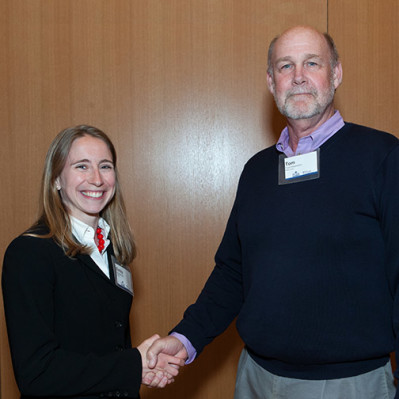
The Y-Prize Competition is all about sparking innovation at Penn. Tom Fitzsimons, CEO of Kerathin LLC, discusses why the competition is unique and what made this year’s prizewinning idea stand out.
What makes the Y-Prize competition interesting to you?
The goal of the Y-Prize competition is to get a different perspective on results from Penn researchers. The researcher knows what problem they are trying to solve with the tools they develop in their labs, but they don’t have the time to explore what other applications might exist for their inventions. The Y-Prize allows people without the problem/solution bias of the inventor to try to find unexpected applications for these technologies.
What is interesting to me is that it is fun to see what people can come up with when they don’t know that what they want to do is impossible. Knowledge and experience are powerful tools, but they are also powerful sources of status-quo inertia.
The Y-Prize is NOT a business plan competition, although the business issues are important. The criteria for judging the contest are a bit fluid. The first and largest is whether the proposed application uses the Penn technology in an interesting way that is sort of “Wow, I never thought of that.” The second criterion is whether the technology from Penn is essential to the solution.
What made the winning idea compelling to the panel of judges?
Ultimately, TRHex was chosen for all the reasons it would never have won a business plan competition. It is a unique use of a Penn technology. It is readily accomplishable. But, it has virtually no technical risk and really needs no other technologies to make it happen. Hence there is no barrier to entry by competitors, other than the fact that the market itself is small and somewhat procedurally difficult from a sales cycle perspective.
What value does the Y-Prize offer for student participants?
The competition is a learning experience for students in two ways. First, they get to use their personal experience to stretch their brains in white-boarding applications for technologies they know very little about. A great example of this was Agribots, where a team member said, “Hey, this could solve a problem for my family’s winery.”
A second goal is to get students to conduct real-world testing of an idea so they are sure they are meeting the market needs. Getting a technology adapted to meet essential customer requirements is an iterative process, and the end result will ideally be a successful product.
Up next: Wharton Business Consultant Isabelle Park and Technology Consultant Gavin Keneally on helping to craft the prizewinning idea.



